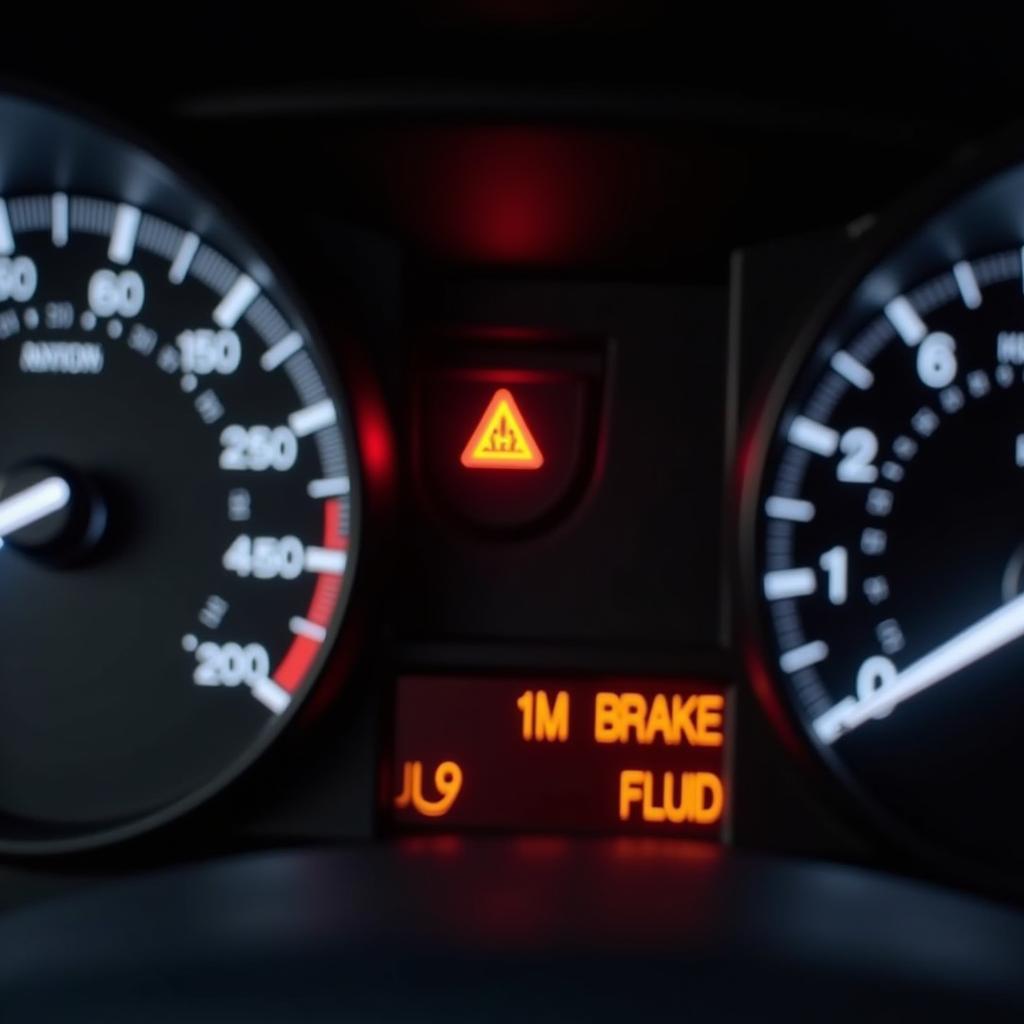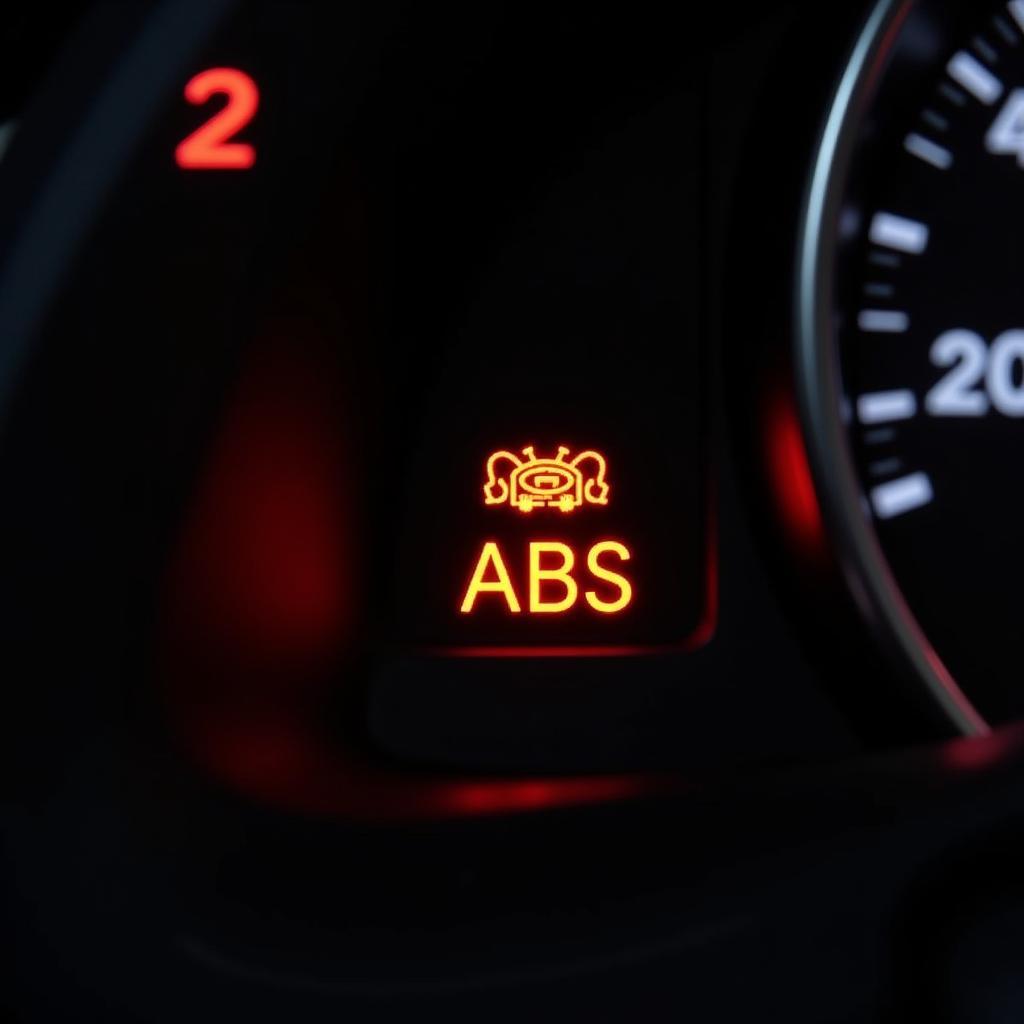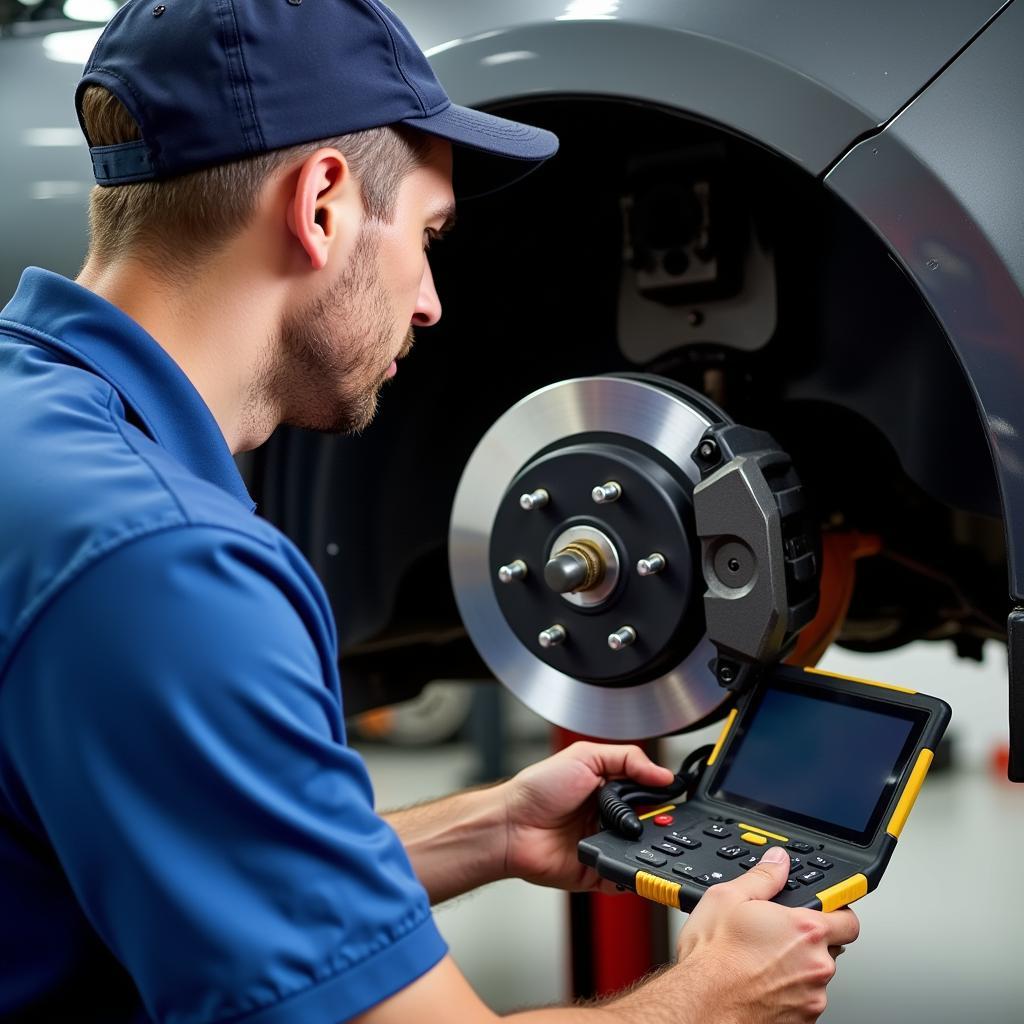That dreaded brake system warning light has illuminated on your dashboard, and now you’re understandably concerned. What does it mean? Is it safe to drive? This article will guide you through understanding the brake system warning light, its potential causes, and what steps you can take to resolve the issue. It’s important to address this warning promptly as your brakes are critical for your safety and the safety of others on the road.
Having a functional brake system is paramount for safe driving. The brake system warning light is designed to alert you to potential problems that could compromise your braking ability. Ignoring this light could lead to dangerous situations. Learn more about specific issues like the VW Golf brake system warning light by clicking vw golf brake system warning light.
What Does the Brake System Warning Light Mean?
The brake system warning light, often a red exclamation point within a circle or parentheses, can indicate several issues. It can signal low brake fluid, a problem with the anti-lock braking system (ABS), or a malfunction within the braking system itself.
Why is my brake system warning light on?
Several factors can trigger the brake system warning light. The most common include:
- Low Brake Fluid: This is the most frequent culprit. Low brake fluid can result from leaks in the brake lines or worn brake pads.
- Faulty ABS System: While your conventional brakes might still function, a problem with the ABS can trigger the warning light. This could involve a sensor issue or a malfunction within the ABS module itself.
- Parking Brake Engaged: Sometimes, the simplest explanation is the correct one. If your parking brake is even slightly engaged, the warning light might illuminate.
- Worn Brake Pads: As brake pads wear down, the brake fluid level in the reservoir drops. This can trigger the low brake fluid warning, which often manifests as the brake system warning light.
 Brake System Warning Light – Low Fluid
Brake System Warning Light – Low Fluid
Troubleshooting the Brake System Warning Light
If your brake system warning light comes on, take these steps:
- Check the Parking Brake: Ensure the parking brake is fully disengaged.
- Inspect Brake Fluid Level: Carefully check the brake fluid level in the reservoir. If it’s low, add brake fluid of the correct type as specified in your owner’s manual.
- Check for Leaks: Look for any signs of brake fluid leaks around the brake lines, calipers, and wheel cylinders.
- Test Your Brakes: In a safe location, gently apply the brakes to assess their responsiveness and feel. If they feel spongy or unresponsive, do not drive the car.
“A visual inspection of your brake system can often reveal obvious problems like leaks or worn brake pads,” advises John Miller, ASE Certified Master Technician. “Addressing these issues promptly can prevent more serious problems down the road.”
 Brake System Warning Light – ABS Issue
Brake System Warning Light – ABS Issue
You can find more specific information on car models like the Acura RDX at brake system warning light acura rdx.
When to Seek Professional Help
If you’ve checked the basics and the warning light persists, or if you notice any unusual brake behavior, it’s crucial to seek professional help immediately. A qualified technician can diagnose the problem accurately and perform the necessary repairs. Remote diagnostic services and software installations, like those offered by specialized automotive technicians, are becoming increasingly popular for addressing complex issues. They can often pinpoint the problem quickly and efficiently. For quick reference guides, you might find resources like the brake system warning light tells you quizlet helpful. However, for proper diagnosis and repair, always consult a qualified technician.
“Modern brake systems are complex, and attempting DIY repairs without proper knowledge and tools can be risky,” cautions Sarah Chen, Automotive Engineer. “A professional diagnosis ensures the problem is addressed correctly, maintaining the safety and reliability of your vehicle.”
 Brake System Warning Light – Professional Help Learn more about specific car models, such as the Honda Odyssey, at brake system warning light honda odyssey. You can also find animated illustrations on brake system warning light gif.
Brake System Warning Light – Professional Help Learn more about specific car models, such as the Honda Odyssey, at brake system warning light honda odyssey. You can also find animated illustrations on brake system warning light gif.
Conclusion
The brake system warning light is a crucial safety indicator. Understanding its meaning and taking prompt action can prevent serious problems and ensure your safety on the road. Don’t ignore this warning; address it promptly to maintain a safe and reliable braking system. Remember, a properly functioning brake system is essential for your safety and the safety of others.
FAQ
-
Is it safe to drive with the brake system warning light on? It depends on the underlying cause. If the parking brake is engaged, it’s a simple fix. However, if it’s due to low brake fluid or another issue, it’s unsafe to drive.
-
Can I add brake fluid myself? Yes, but ensure you use the correct type of brake fluid specified in your owner’s manual.
-
How often should I check my brake fluid? It’s a good practice to check your brake fluid level at least once a month.
-
What should I do if my brakes feel spongy? This indicates a potential problem with the brake system and requires immediate professional attention.
-
How much does it cost to fix a brake system problem? The cost varies depending on the specific issue. A simple brake fluid top-up is inexpensive, while more complex repairs can be costly.
-
Can a brake system warning light be related to the ABS system? Yes, a malfunctioning ABS system can trigger the brake system warning light.
-
What is the difference between the brake system warning light and the ABS warning light? The brake system warning light indicates a general issue with the brakes, while the ABS warning light specifically indicates a problem with the anti-lock braking system.
